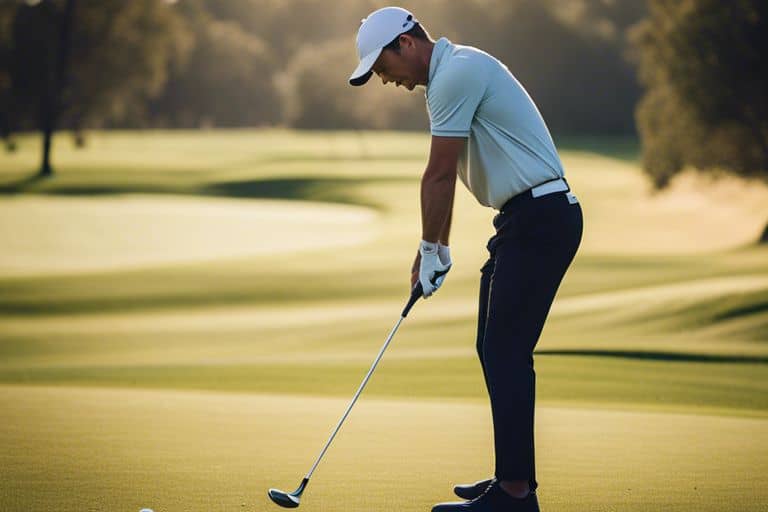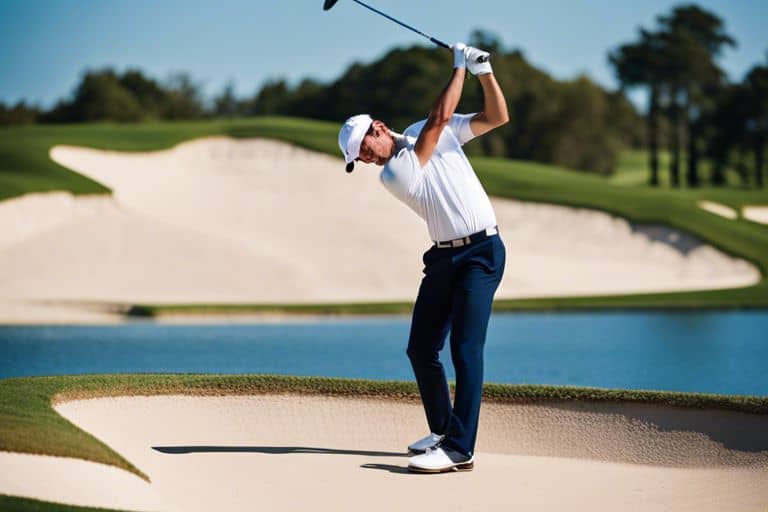What is a "fried egg" thin shot in golf?
Peradventure you have ever found yourself in the greenside bunker staring down at your ball buried like a “fried egg” in the sand, you know the feeling of dread that washes over you. This shot, also known as a “skulled” shot, occurs when the leading edge of the club hits the equator of the golf ball, resulting in a low-flying trajectory with little to no spin. It is a highly challenging and risky shot to execute, but when done correctly, it can yield impressive results.
Anatomy of a “Fried Egg” Thin Shot
For those unfamiliar with the term, a “fried egg” is a type of thin shot in golf where the clubhead strikes the top half of the golf ball, resulting in a low trajectory with very little spin. The ball often ends up buried in the sand, resembling a fried egg – hence the name. The unique challenge posed by this type of shot requires a thorough understanding of its anatomy and characteristics in order to effectively navigate it on the course.
Characteristics of a Thin Shot
A thin shot, also known as a “skulled” shot, occurs when the clubhead impacts the top part of the ball, resulting in a low-flying trajectory and very little spin. This can be caused by a variety of factors, such as poor posture, excessive wrist action, or misjudgment of the ball’s lie. Thin shots often produce a harsh, uncontrolled flight path and can lead to significant distance loss.
How a “Fried Egg” Differs from Regular Thin Shots
Unlike regular thin shots, a “fried egg” tends to bury itself into the sand upon impact, creating a more challenging scenario for the golfer. The ball becomes partially or fully submerged in the sand, making it difficult to extract cleanly. This type of lie presents a unique set of challenges, as the player must carefully assess their options and execute a precise and controlled shot to escape the bunker.
Causes of “Fried Egg” Thin Shots
Assuming you’re familiar with the frustration of hitting a “fried egg” thin shot in golf, it’s important to understand the root causes of this common problem. There are several factors that can lead to this undesirable outcome, and being aware of them can help you make adjustments to your game.
Common Swing Errors
One of the most common reasons for hitting a “fried egg” thin shot is a faulty swing. This can include leaning back on the downswing, which causes the club to make contact with the ball higher than intended. Another common error is not keeping your weight forward on the downswing, leading to a higher point of contact with the ball. Working with a qualified instructor to identify and correct these swing errors can significantly improve your chances of avoiding “fried egg” shots.
Environmental and Course Conditions
Environmental and course conditions can also contribute to “fried egg” thin shots. Wet or soft sand in the bunker can cause the ball to sink deeper, making it more likely for the club to catch the sand behind the ball and produce a thin shot. Additionally, uneven lies or tight lies in the rough can make it difficult to make clean contact with the ball, increasing the likelihood of a “fried egg” shot. Being aware of these conditions and adjusting your approach can help minimize the impact of environmental factors on your shots.

Techniques for Avoiding “Fried Egg” Thin Shots
Despite being a challenging shot to master, there are techniques you can employ to avoid hitting “fried egg” thin shots in golf. With the right approach and mindset, you can significantly reduce the occurrence of these frustrating shots and improve your overall game. In this chapter, I will share some effective techniques for avoiding “fried egg” thin shots and provide tips on how to execute them successfully.
Proper Stance and Posture
One of the key factors in avoiding “fried egg” thin shots is maintaining proper stance and posture. When addressing the ball, make sure to position the ball slightly ahead of center in your stance to ensure clean contact. Keep your weight forward on your front foot, and maintain a slight angle with your spine to encourage a descending blow onto the ball. This will help you avoid catching too much turf before making contact, reducing the likelihood of hitting a “fried egg” thin shot.
Swing Mechanics and Club Selection
Another important aspect to consider is your swing mechanics and club selection. To avoid “fried egg” thin shots, focus on maintaining a smooth and controlled swing, and avoid excessive wrist action through impact. Additionally, choose the appropriate club for the shot at hand, taking into account the distance to the target and the lie of the ball. Using the right club will allow you to make cleaner contact with the ball, reducing the chances of hitting a “fried egg” thin shot.

Correcting a “Fried Egg” Thin Shot
Lastly, let’s discuss some ways to correct a “fried egg” thin shot. Once you find yourself in the unfortunate position of hitting a “fried egg” shot, it’s important to approach the situation with a calm and focused mindset. Remember, the key to successfully navigating out of this challenging shot lies in proper technique and strategy.
On-the-Course Strategies
When faced with a “fried egg” lie, the first thing to keep in mind is to use the proper club. I recommend using a sand wedge or a lob wedge, as they provide the loft necessary to get under the ball and lift it out of the sand. Additionally, make sure to open the clubface to increase the loft and create more bounce, which will help prevent the club from digging too deeply into the sand. Lastly, make sure to swing aggressively through the sand, accelerating the clubhead through impact to ensure you get enough lift on the ball. Remember to keep a steady rhythm and follow through.
Practice Drills for Improvement
One effective practice drill to improve your ability to get out of a “fried egg” lie is to work on your bunker shots from different angles and lies. I recommend setting up a practice area with a variety of bunker conditions, including “fried egg” lies, to simulate real on-course scenarios. Focus on using the correct technique and club selection, and practice repeatedly until you feel confident in your ability to successfully escape these challenging lies. Additionally, practice hitting bunker shots with different amounts of sand and varying the distances to the target to improve your overall sand game.
I find that keeping a positive mindset while facing a “fried egg” thin shot can make all the difference. Using the correct technique, club selection, and practicing different bunker shots will help you overcome this challenging lie with ease. Remember to stay calm, focused, and confident in your abilities, and you will see improvement in your sand play.
Summing up the “Fried Egg” Thin Shot in Golf
In conclusion, mastering the technique of hitting a “fried egg” thin shot in golf can make a significant difference in your game. By understanding the proper technique and practicing regularly, you can improve your ability to handle difficult lies and create quality shots. Remember to keep your clubface square, use a steeper angle of attack, and maintain a consistent follow-through to achieve better results. With dedication and persistence, you can turn this challenging shot into a valuable addition to your golfing arsenal.






